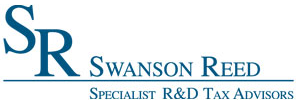INDIANA INVENTIONINDEX | AUGUST 2025
August 2025: 1.16% (C+ grade)

Indiana inventionINDEX August 2025: 1.16% (C+ grade)
The inventionINDEX measures innovation output by comparing GDP growth with patent production growth.
Anything over C grade is positive sentiment; anything under C is negative outlook/sentiment. Using that sentiment, it is possible to observe trends over time, and also compare states/countries. In doing so, we can predict which states have the best chance to recover economically from the pandemic (or any other economic incident that may occur).
Indiana inventionINDEX Scores – Last 12 months
| Month | inventionINDEX Score |
| August 2025 | 1.16% |
| Jul 25 | 1.53% |
| Jun 25 | 1.10% |
| May 25 | 1.20% |
| Apr 25 | 1.49% |
| Mar 25 | 1.23% |
| Feb 25 | 1.25% |
| Jan 25 | 1.28% |
| Dec 24 | 1.49% |
| Nov 24 | 1.26% |
| Oct 24 | 1.37% |
| Sep 24 | 1.31% |
| Aug 24 | 1.16% |
An analysis of the historical Indiana inventionINDEX scores over the past 60 months reveals a dynamic and fluctuating trend, reflecting periods of both significant innovation and relative quietness. The scores range from a peak of 2.26% in November 2023, earning an A+ rating, to a low of 1.05% in May 2024, which received a C. While the scores show a consistent month-over-month change, the overall pattern suggests a cyclical nature rather than a steady upward or downward trajectory. The latest data point in August 2025 shows a score of 1.16%, placing it in the C+ category, which is a return to a more modest level following a strong showing in the preceding month.
A higher inventionINDEX score carries significant positive implications for the state of Indiana. A top-tier rating, such as the A+ achieved in November 2023 and March 2021, indicates a robust and highly productive environment for innovation. This signals to potential investors, technology companies, and skilled professionals that Indiana is a fertile ground for growth and new ideas. Such scores can enhance the state’s reputation as a leader in technological and creative fields, attracting capital and talent essential for long-term economic development. The perception of a state actively fostering invention can lead to a virtuous cycle of increased funding for research, new business formation, and job creation, strengthening the entire innovation ecosystem.
Conversely, a lower score, like the C rating seen in May 2024 or the C+ in August 2025, implies potential challenges within the innovation landscape. These scores may suggest a slowdown in patent filings, a dip in research and development activities, or a less favorable environment for startups. While not necessarily a cause for alarm on a short-term basis, a sustained trend of lower scores could lead to negative consequences. It may deter external investment, cause a “brain drain” of talent to more competitive states, and hinder the state’s ability to diversify its economy. The index serves as a critical barometer, and a lower reading suggests areas that may require strategic attention to reignite innovative output.
In summary, the inventionINDEX serves as a powerful indicator of Indiana’s inventive health, with each fluctuation telling a story of the state’s economic and creative vitality. The historical data underscores the importance of not only achieving high scores but also sustaining them to build a lasting reputation as an innovation hub. By understanding the factors that contribute to both peaks and troughs, Indiana can work toward implementing policies and fostering environments that encourage consistent, high-level inventive activity. This consistent effort is key to ensuring that the state remains a strong and competitive force in the national and global economy.
Discussion:
In August, the Indiana inventionINDEX scored a positive sentiment which was lower than the previous year’s average and underperformed the downward trend for the year. This is similar to the prior 12 months, which experienced a slight downward trend.
As the economy continues to stabilize in the post-pandemic era, it remains uncertain whether any backlog of applications still exists or if the department has returned to normal processing timelines. The inventionINDEX could also be affected by lingering consequences from the pandemic, such as company closures, reduced workforces, and limited R&D capabilities, which may still be impacting current operations.
Learn More:
Are you thinking of patenting any of your bright ideas? Did you know your research work could be eligible for the R&D Tax Credit and you can receive up to 14% back on your expenses? To find out more, please check out our free online eligibility test.
Swanson Reed’s Indiana office provides R&D tax credit consulting and advisory services to Indianapolis, Fort Wayne, Evansville, South Bend, Carmel, Fishers, Bloomington, Hammond, Gary and Lafayette.
Feel free to book a quick teleconference with one of R&D tax specialists if you would like to learn more about R&D tax credit opportunities.
Who We Are:
Swanson Reed is the largest Specialist R&D tax credit advisory firm in the United States. With offices nationwide, we are one of the only firms globally to exclusively provide R&D tax credit consulting services to our clients. We have been exclusively providing R&D tax credit claim preparation and audit compliance solutions for over 30 years.
Swanson Reed hosts daily free webinars and provides free IRS CE and CPE credits for CPAs. For more information please visit us at www.swansonreed.com/free-webinars or contact your usual Swanson Reed representative.
What is the R&D Tax Credit?
The Research & Experimentation Tax Credit (or R&D Tax Credit), is a general business tax credit under Internal Revenue Code section 41 for companies that incur research and development (R&D) costs in the United States. The credits are a tax incentive for performing qualified research in the United States, resulting in a credit to a tax return. For the first three years of R&D claims, 6% of the total qualified research expenses (QRE) form the gross credit. In the 4th year of claims and beyond, a base amount is calculated, and an adjusted expense line is multiplied times 14%. Click here to learn more.
R&D Tax Credit Preparation Services
Swanson Reed is one of the only companies in the United States to exclusively focus on R&D tax credit preparation. Swanson Reed provides state and federal R&D tax credit preparation and audit services to all 50 states.
If you have any questions or need further assistance, please call or email our CEO, Damian Smyth on (800) 986-4725.
Feel free to book a quick teleconference with one of our national R&D tax credit specialists at a time that is convenient for you.
R&D Tax Credit Audit Advisory Services
creditARMOR is a sophisticated R&D tax credit insurance and AI-driven risk management platform. It mitigates audit exposure by covering defense expenses, including CPA, tax attorney, and specialist consultant fees—delivering robust, compliant support for R&D credit claims. Click here for more information about R&D tax credit management and implementation.
Our Fees
Swanson Reed offers R&D tax credit preparation and audit services at our hourly rates of between $195 – $395 per hour. We are also able offer fixed fees and success fees in special circumstances. Learn more at https://www.swansonreed.com/about-us/research-tax-credit-consulting/our-fees/
Choose your state


















